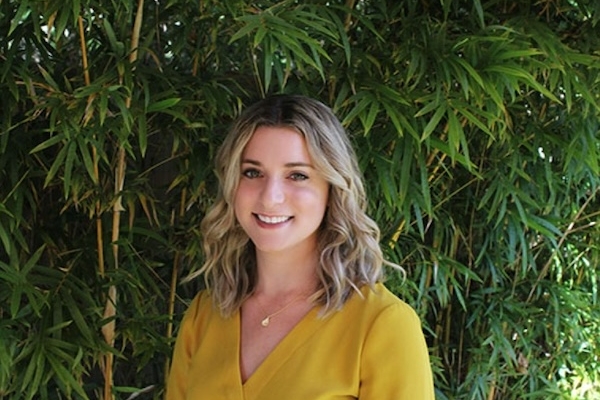We really do have the best students. They are the reason so many of our instructors continue to teach courses in the humanities, sciences, industrial and business fields. Even instructors who take a break are drawn to return—like Patricia Egan was.
Patricia’s teaching journey with us was set in motion by Meryl Natchez, founder of TechProse, who had also served on the advisory council for the Technical Communication program back in 2004.
Technical communication? Doesn’t she teach an accounting course? Yes, she does. And it is all connected.
You see, Patricia’s career began working on grants to support the arts. In 2008, she earned her master’s degree in professional and technical communication from New Jersey Institute of Technology (NJIT). At NJIT, she worked with faculty to develop a distance-learning course in proposal writing under a grant from Alfred P. Sloan Foundation. In addition, she developed a course in project management for technical communicators, which she taught at Extension, to complete her master’s work at NJIT.
“I taught technical editing for 10 years,” Patricia fondly remembers. “I enjoy working with adult students, sometimes who are changing careers or who are striving to enhance their professional knowledge while still on the job.”
Her technical editing experience would also apply some years later. Let’s retrace the career steps and personal journey that brought Patricia back to our classrooms in 2020 to teach a seemingly unrelated topic—Accounting for Government and Not-for-Profit Organizations.
Making Financial Connections in Art
Patricia is a native San Franciscan who grew up just south of the city. While earning her bachelor’s degree in dramatic art-dance at UC Berkeley, she took an elective course in 20th-century sculpture from Peter Selz, who was the founding director of what is now the Berkeley Art Museum and Pacific Film Archive (BAMPFA) and who also was a curator in the Department of Painting and Sculpture at The Museum of Modern Art (MoMA) in New York City.
The course ended up being not only an interesting look into art, but also an experience that influenced what was to come for Patricia.
Her grant writing exposure began with the San Francisco Early Music Society in the late 1970s. There, Patricia held roles as a board member in development and in publicity.
“I wrote my first grant proposal under the tutelage of Lee McRae, a fellow board member,” she recalls. “The proposal was successful, and that experience introduced me to institutional giving to the arts.”
An Arts Management Fellowship at the National Endowment for the Arts (NEA) unquestionably changed Patricia’s career path and her life, as she has spent time in Washington, D.C., and eventually, New York.
“My placement was in the Budget Office, which afforded me an excellent overview of the agency's work and an opportunity to observe the approval of the Challenge Grant Program, introduced by then-Chair Nancy Hanks.”
As Patricia’s knowledge of arts grants and budgeting grew, so did her experience in accounting and finance.
“All arts management fellows received orientation to the grants process at both the Arts Endowment and the Humanities Endowment, including Office of Management and Budget (OMB) and Department of Labor requirements,” she says.
“This experience proved highly valuable as my professional opportunities unfolded in government and private sector grantmaking.”
Patricia’s being on the board of directors of the Dance Films Association led to her next position in grant and fund raising—this time at MoMA in New York.
“I moved to the finance department where I worked on a set of fund accounts, then was moved to the grants officer position because of my background at the NEA. My course with Professor Selz definitely helped as I developed federal and state grant proposals for curatorial, curatorial support and general operations at the museum,” she says of her career arc.
But it wasn’t just skills to understand grants and fundraising that she gained while at MoMA. She also developed the professional writing skills necessary to ensure that grant applications met federal government standards and reflected the quality expectations by senior management.
“Federal grants work involves much more than writing proposals. All federal guidelines must be followed, including OMB requirements for reporting and management. My experience with the Budget Office at NEA and orientation in the Grants Office enabled me to work capably on federal awards with complex matching requirements, including Treasury Grants and Challenge Grants.”
Patricia herself has earned awards for her work; she became an early recipient of the Certified Fund Raising Executive (CFRE) credential—which she held for 10 years—and subsequently was recognized as CFRE (ret.).
Exploring the Business Side of Technical Editing
“Sometimes life changes, and we change with it.”
This wasn’t the first evolution nor the last for Patricia.
“In 1998, when I had finished my M.S. coursework (thesis pending), I returned home to California to explore opportunities in a very burgeoning Silicon Valley and worked for TechProse. When Extension was looking for an instructor for a required course, it was Meryl who recommended me,” she apprises.
“The connection that I would make between grants management and technical editing is a very keen eye for details and precision adherence to complex guidelines. Grantsmanship includes narrative, budgetary and financial reporting. A good technical communicator will incorporate quantitative persuasion with clear, expository writing grounded in rhetorical theory. I integrated this seemingly diverse background when I worked with a senior engineer on his business development presentations to launch a company that was acquired by Cisco Systems.”
And then Patricia had another life-changing experience.
“I received a diagnosis of primary lymphedema at the lymphatic disorders clinic, Stanford University Medical Center. Thus, I became a very active patient advocate and organizational leader in the lymphedema and rare disease communities, both in California and in Washington, D.C.,” she says.
In 2014, Patricia thought that she had closed the chapter on teaching—but that door was still ajar. And her own educational journey was unfinished.
Finding Her Place in Accounting and Not-for-Profits
In 2013, Patricia was pursuing an M.B.A. at Mills College Lorry I. Lokey School of Business and Public Policy—with a concentration in accounting.
“I come from a family of accountants: My grandfather was a CPA with Lybrand, Ross Bros & Montgomery in San Francisco—before the firm became Coopers & Lybrand and, subsequently, PricewaterhouseCoopers,” she tells me.
“I entered the M.B.A. program with an open mind, to see how my professional background might meld with all the voluntary leadership that I had undertaken in New York and California. Very quickly, it became apparent that accounting was my strength and that it could open doors to senior leadership roles. Both the founding dean at the Lokey School and my accounting professor encouraged me to take a serious look at tax work, too, given that tax is often a reflection of public policy.”
Earning an M.B.A. has also played an unexpected role in the nonprofit organizations that Patricia has volunteered with and worked for during the years that have followed.
“My M.B.A. has helped me with a range of operations and labor situations with which I had to deal,” she explains. “The accounting and related tax work helped me to make certain that not-for-profit organizations were in compliance with federal and state reporting requirements and that management practices were undertaken at the highest standards.
“There are many areas where not-for-profit organizations are asked to describe how they handle management and operations. Knowledge of the prevailing best practices can make a tremendous difference in making certain that the board of directors is fully informed and engaged. Independent charity rating entities often review compliance responses as part of their evaluation process. As a board member, I want to make certain that any organization that I serve is in the best standing possible.”
Patricia uses her strengths in accounting and management and incorporates them and her fundraising background into her classes, too. Being able to share this knowledge and experience with students eager to learn is partially what led her to return to teach Accounting for Government and Not-for-Profit Organizations, an elective in our Certificate Program in Accounting.
“This was clearly a match, and I am truly delighted to teach this particular course and to work with students who are interested in the public and philanthropic sectors,” she enthuses.
“The intersection of state and federal policies with accounting and tax reporting continues to engage my attention as a professional, as an advocate and in voluntary leadership. These are areas where the focus is on public service, public good. In our course, students select a governmental entity and track the financial reporting through that entity's Annual Comprehensive Financial Report (ACFR, formerly CAFR). This approach offers students the opportunity to see how the numbers tell the story of priorities, service and responsible custodianship of funds.”
Providing Clear Guidance on Accounting Standards …
Patricia not only taps into her vast experience to inform course content, but she’s also using best practices in online learning based on her own interactions with the format. “With the turnaround from classroom to distance learning necessitated by the COVID-19 shutdowns, I quickly drew on my experience in distance education during my M.S. and reworked the content for an online platform. Fortunately, I already had experience with online presentations and so forth, so the transition was not difficult. I work to make certain that, as a class, we get to know one another, exchange our professional experiences and achieve the benefits of Extension course opportunities.”
Some of those course benefits: Getting a clear idea of what to expect on the Uniform Certified Public Accountant (CPA) Examination, and Patricia’s professional knowledge about the nonprofit sector enhances the course’s content and learning objectives.
“The course meets the standards set by the California Board of Accountancy for qualifying to take the Uniform CPA Exam,” she says, “and the syllabus is approved by the UC Berkeley Academic Senate.”
The Uniform CPA Exam comprises four tests: Auditing and Attestation (AUD), Business Environment and Concepts (BEC), Regulation (REG), and Financial Accounting and Reporting (FAR). “The REG section includes questions about accounting for governmental and not-for-profit organizations, along with taxation and managerial accounting. Our Accounting for Governmental and Not-for-Profit Organizations course prepares students for questions related to this area of the exam,” explains Patricia.
“A distinctive aspect of this course is that it draws on three different accounting standards: Financial Accounting Standards Board (FASB), Governmental Accounting Standards Board (GASB) and the Federal Accounting Standards Advisory Board (FASAB). I know of no other accounting course that draws on all three of these standards, which makes the course more complex than students might initially anticipate.
“We use a dominant text, Reck, Lowensohn and Neely's Accounting for Governmental and Nonprofit Entities (McGraw Hill). Because the course is a qualified elective with the California Board of Accountancy, I am careful to keep the learning objectives and material on track.”
Her long work and volunteer history provides real-world case studies for the classroom, and the coursework is supplemented by drawing discussions from them.
“I once was assigned to recommend a solution to a likely 20-percent budget cut in a state government,” Patricia recalls of her own education. “How do you achieve a budget reduction at this level while still maintaining expected public services? The students apply what they have learned to develop their own solutions. As a class, we discuss the various approaches and I share the process by which I developed my own recommendation. We also review current practices to see what actually transpired in response to this challenge.”
She adds, “An example of how I apply some of my real-world experience as a board member includes a review of a recent request for nominations to the board of trustees of a major, international performing arts organization. I use the document to prompt thoughts about a board member's role and responsibilities and how the organization presents itself as it strives to attract strong, engaged, effective leadership. At the end of the day, board members hold responsibility for fiscal and ethical policies, in addition to how the organization achieves its stated philanthropic mission. As a board member, I have served as chair, treasurer, and chair of the audit committee. In these capacities, I have ascertained that financial reports and compliance documents have been as complete and accurate as possible.
“Given my continuing involvement in the areas of governmental and not-for-profit accounting, I make certain to alert students to relevant webinars, especially regarding updates and changes in policies. During a previous class, an interested student and I attended a webinar about the development of International Financial Reporting Standards (IFRS) for not-for-profit organizations. The student reported back to the class, thus sharing new information.”
… And in Ethics
The sharing of up-to-date information in accounting might not sound so important to someone not in the field. But those who know—or even have watched or read the news in recent years—keeping current on accounting ethics is extremely important. Maybe even more so for a nonprofit or government agency, where in the future this may become a bigger focus.
“The American Institute of CPAs (AICPA) Code of Professional Conduct provides the dominant principles and rules related to the practice of public and business accounting,” says Patricia.
“The code further recommends that AICPA members consult with the ethical requirements of relevant state CPA societies; authoritative regulatory bodies (such as the California Board of Accountancy); and governmental agencies including the Securities and Exchange Commission (SEC), Public Company Accounting Oversight Board (PCAOB), General Accounting Office (GAO), Department of Labor (DOL), and federal, state and local taxing authorities.”
Patricia further details: “The National Council of Nonprofits' statement on ethics and accountability begins with ‘America's charitable nonprofits rely on the public trust to do their work.’ This is a topic that embraces a wide range of concerns, including conflicts of interest, whistleblowing, executive compensation, internal controls, cybersecurity, public disclosure policies, fundraising practices, and financial management and transparency. The IRS Form 990—the annual compliance and information return that tax-exempt organizations prepare—is a public document, except for certain sections that include private donor information. Charity watchdog and information groups use annual reports, the Form 990 and other publicly available information to develop their ratings. In 2004, California passed its Nonprofit Integrity Act; many state Offices of the Attorney General have charity registration requirements, including registration of professional fundraising operations.”
At the federal government level, ethics in accounting is not much different and oversights are even more visible to the public eye.
“The Ethics in Government Act of 1978 and Ethics Reform Act of 1989 are updated as Congress determines and are interpreted by judicial decisions. Among the federal agencies concerned with ethics are the General Accounting Office (GAO) and Office of Management and Budget (OMB). Generally accepted government auditing standards (GAGAS)—developed by the Comptroller General—outline five fundamental ethical principles, including public interest, integrity, objectivity, proper use of government information and professional behavior.”
She points out, “The topic of accounting ethics surfaces as whistleblower reports, media exposés and scandals reach the public's attention. With increasing concerns about data security, information privacy and technology matters, I am seeing new discussions about issues, solutions and reporting requirements on a regular basis.”
So how does this all tie in? “This course includes a discussion about ethics as part of auditing of government and not-for-profit organizations,” she says. “Accountants often prepare the various reports, and they absolutely need to be up to date with requirements.”
Accountants preparing various reports. Kind of sounds like technical communication to me.



